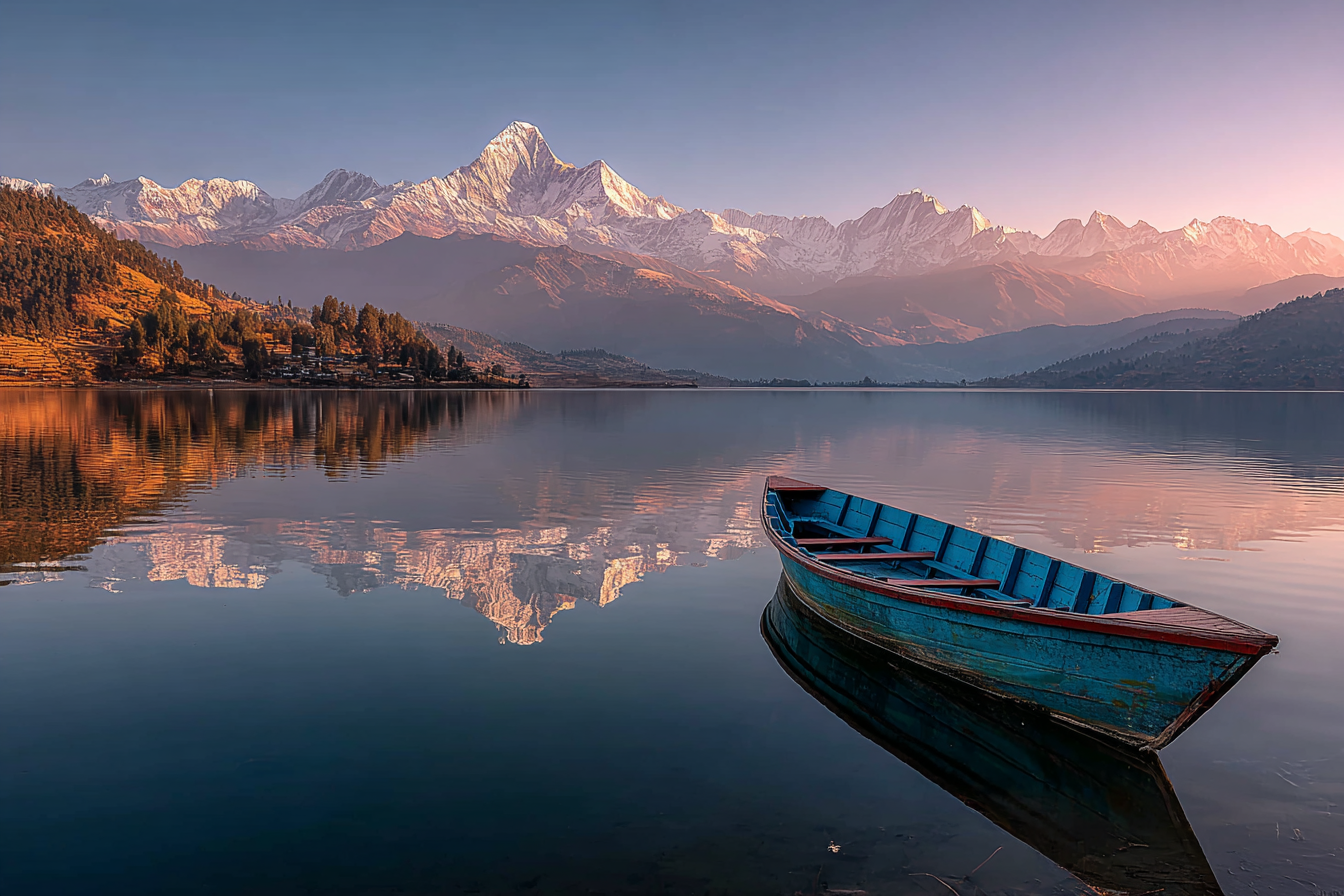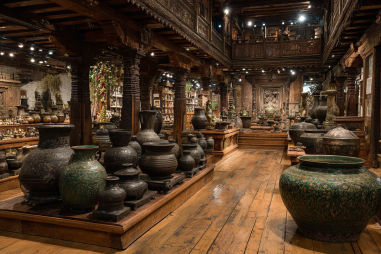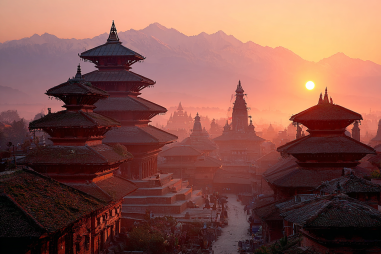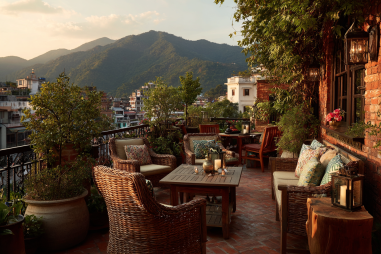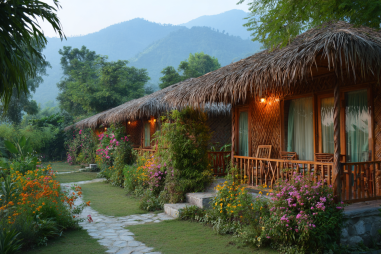Pokhara, often referred to as Nepal’s lakeside gem, is a captivating destination that offers a harmonious blend of nature, adventure, and culture. Nestled in the stunning Annapurna region, this city is a gateway for travelers seeking breathtaking mountain views, peaceful lakeside retreats, and exciting outdoor activities. Whether you’re an adventure seeker or a culture enthusiast, Pokhara promises an unforgettable experience. This complete travel guide will walk you through everything you need to know to make the most out of your visit to this beautiful city.
Introduction to Pokhara
Pokhara is the second-largest city in Nepal, located about 200 kilometers west of Kathmandu. It is famed for its serene Phewa Lake, dramatic mountain backdrop including the towering Annapurna range, and vibrant cultural scene. The city serves as a hub for trekkers preparing to explore the Annapurna Circuit, one of the most popular trekking routes in the world. Beyond trekking, the relaxed vibe of lakeside cafes, markets, and cultural landmarks make Pokhara an attractive destination for travelers of all kinds.
How to Get to Pokhara
Reaching Pokhara is convenient and accessible, whether you prefer to travel by air or road. The fastest way is to take a domestic flight from Kathmandu to Pokhara Airport, which typically takes about 25-30 minutes. These flights offer stunning aerial views of the Himalayas but can be subject to weather disruptions. Alternatively, you can enjoy a scenic road trip via tourist buses or private taxis, which usually takes 6 to 8 hours. The journey passes through beautiful landscapes including terraced hills and lush valleys.
Best Time to Visit Pokhara
Pokhara enjoys a temperate climate but the best time to visit generally falls between September and November or March to May. During these months, the weather is clear, and temperatures are pleasant, providing optimal conditions for trekking and sightseeing. The post-monsoon season (September-November) is particularly popular because the skies clear up, revealing pristine views of the snow-capped mountains. Avoid the monsoon months from June to August if you want to steer clear of heavy rains and landslides.
Top Attractions in Pokhara
Phewa Lake
Phewa Lake is the heart of Pokhara’s charm. Its calm waters mirror the towering Annapurna mountains, making it a picture-perfect spot for photography and relaxation. You can rent a traditional wooden boat or paddle a kayak to explore the lake. The island temple of Tal Barahi situated mid-lake is a serene place of worship, offering a peaceful ambiance and a hint of local spirituality.
Davis Falls
Known locally as Patale Chhango, Davis Falls is a unique waterfall where water plunges into an underground tunnel. This natural attraction is both mysterious and beautiful, surrounded by lush greenery. It’s a short drive from the city center and is perfect for a quick but memorable visit.
World Peace Pagoda
Perched on a hilltop overlooking Phewa Lake, the World Peace Pagoda is a striking Buddhist stupa symbolizing harmony and tranquility. The hike up to the pagoda offers breathtaking panoramic views of the lake, city, and Himalayan peaks. Visitors often find the serene atmosphere ideal for meditation and reflection.
Outdoor Activities
Pokhara is a playground for adventure enthusiasts. Here are some must-try outdoor activities:
- Trekking: The city is the gateway to several famous trekking routes such as the Annapurna Base Camp, Ghorepani Poon Hill, and Mardi Himal treks. These trails vary in difficulty and offer close encounters with nature, local villages, and spectacular mountain vistas.
- Paragliding: Pokhara is renowned as one of the best paragliding destinations in the world. Launching from Sarangkot hill, you can soar over Phewa Lake and take in panoramic views of the city and surrounding peaks.
- Boating: Renting a boat on Phewa Lake is a peaceful way to enjoy the natural beauty and unwind. Paddle boats and motorboats are widely available.
Accommodation Options
Whether you are a budget traveler or seeking luxury, Pokhara offers diverse accommodation options. You can find cozy guesthouses and hostels for backpackers near Lakeside, mid-range hotels with great amenities, and upscale resorts that provide stunning lake or mountain views. Many accommodations also offer guided tours and trekking packages, making it easy to plan your adventures.
Local Cuisine and Dining
Pokhara’s culinary scene caters to both local and international palates. Traditional Nepali dishes such as dal bhat (lentil soup with rice), momo (dumplings), and thukpa (noodle soup) are widely available. Lakeside area restaurants offer a mix of Nepali, Tibetan, Indian, and Western cuisines, from cozy cafes to fine dining establishments. Don’t miss trying fresh local trout, often caught from mountain streams and lakes.
Cultural Tips and Festivals
Respect for local customs and traditions is important when visiting Pokhara. Dress modestly, especially at religious sites, and always ask permission before photographing people. The city celebrates several festivals throughout the year, including:
- Tihar: Also known as the festival of lights, celebrated with vibrant decorations and special prayers.
- Dashain: Nepal’s biggest Hindu festival, marked by family gatherings, feasts, and traditional rituals.
- Maghe Sankranti: Celebrated with traditional foods like sesame and molasses sweets to welcome the longer days.
Participating or witnessing these festivities can be a rewarding cultural experience.
Safety and Travel Tips
Pokhara is generally a safe destination for travelers. However, it’s wise to take basic precautions such as safeguarding your belongings and avoiding isolated areas at night. Altitude sickness is less of a concern here compared to higher Himalayan trekking routes, but if you plan to trek, acclimatize properly. Stay hydrated and use travel insurance that covers adventure activities. Also, carry some cash as not all shops or local vendors accept cards.
Sample Itineraries
Here are two sample itineraries to help you organize your Pokhara trip:
3-Day Pokhara Itinerary
- Day 1: Arrive and explore Lakeside area, enjoy boating on Phewa Lake, visit Tal Barahi temple.
- Day 2: Early morning hike to Sarangkot for sunrise, paragliding experience, visit Davis Falls and Gupteshwor Cave.
- Day 3: Visit World Peace Pagoda, explore local markets, enjoy a traditional Nepali dinner.
7-Day Adventure & Culture Itinerary
- Days 1-2: Relax in Pokhara, lakeside exploration, and cultural sites.
- Days 3-6: Embark on a 3-4 day trek to Annapurna Base Camp or Ghorepani Poon Hill.
- Day 7: Return to Pokhara, enjoy a spa treatment or yoga session to unwind.
Making the Most of Your Pokhara Trip
Pokhara delights every traveler with its combination of stunning natural scenery, rich culture, and endless outdoor activities. By planning your visit with consideration for the seasons, local customs, and the type of adventure you seek, you’ll create lasting memories in this peaceful Himalayan town. Take your time to absorb the lake’s tranquil beauty, immerse yourself in Nepali culture, and embrace the thrill of adventure – Pokhara awaits to enchant you at every turn.

